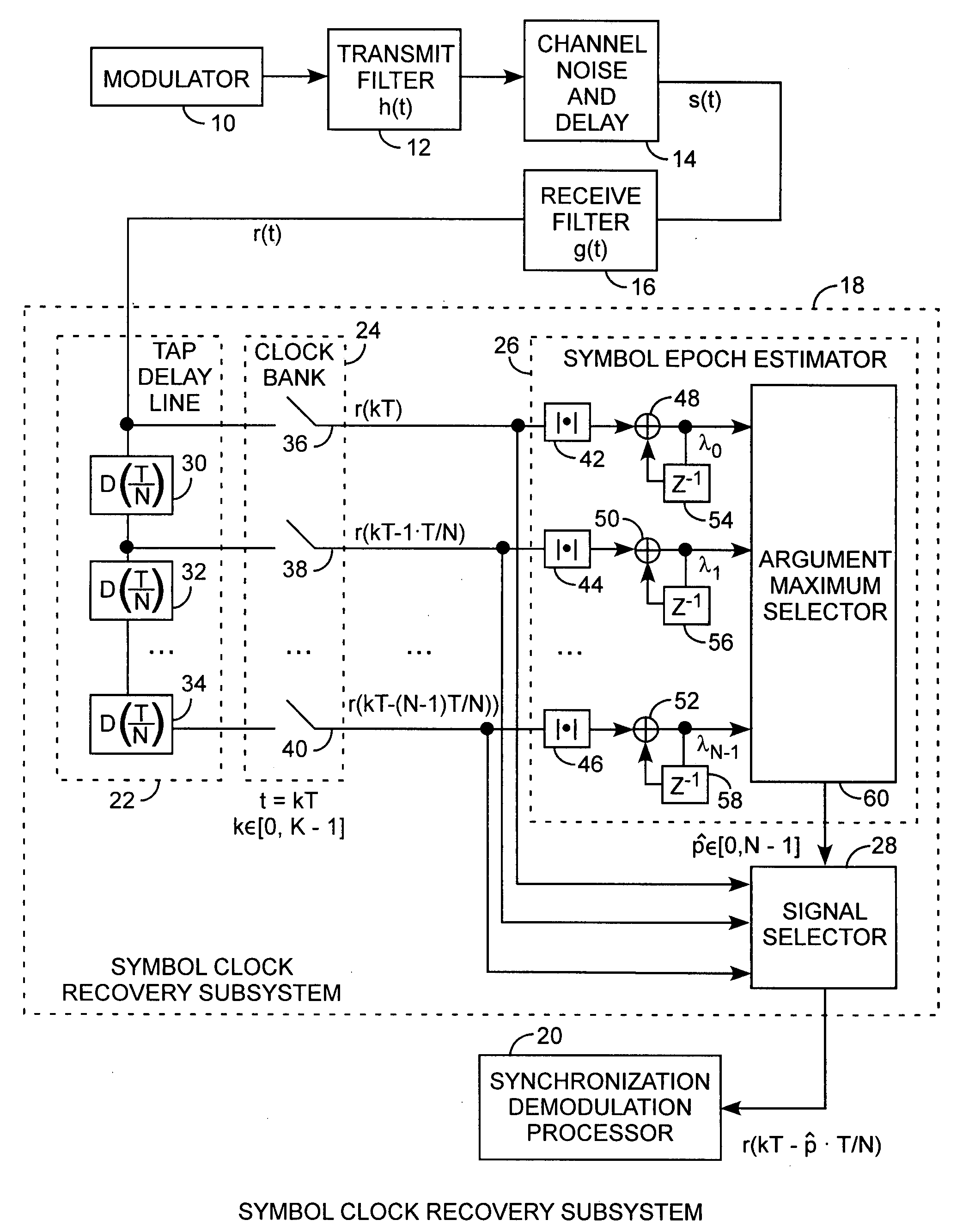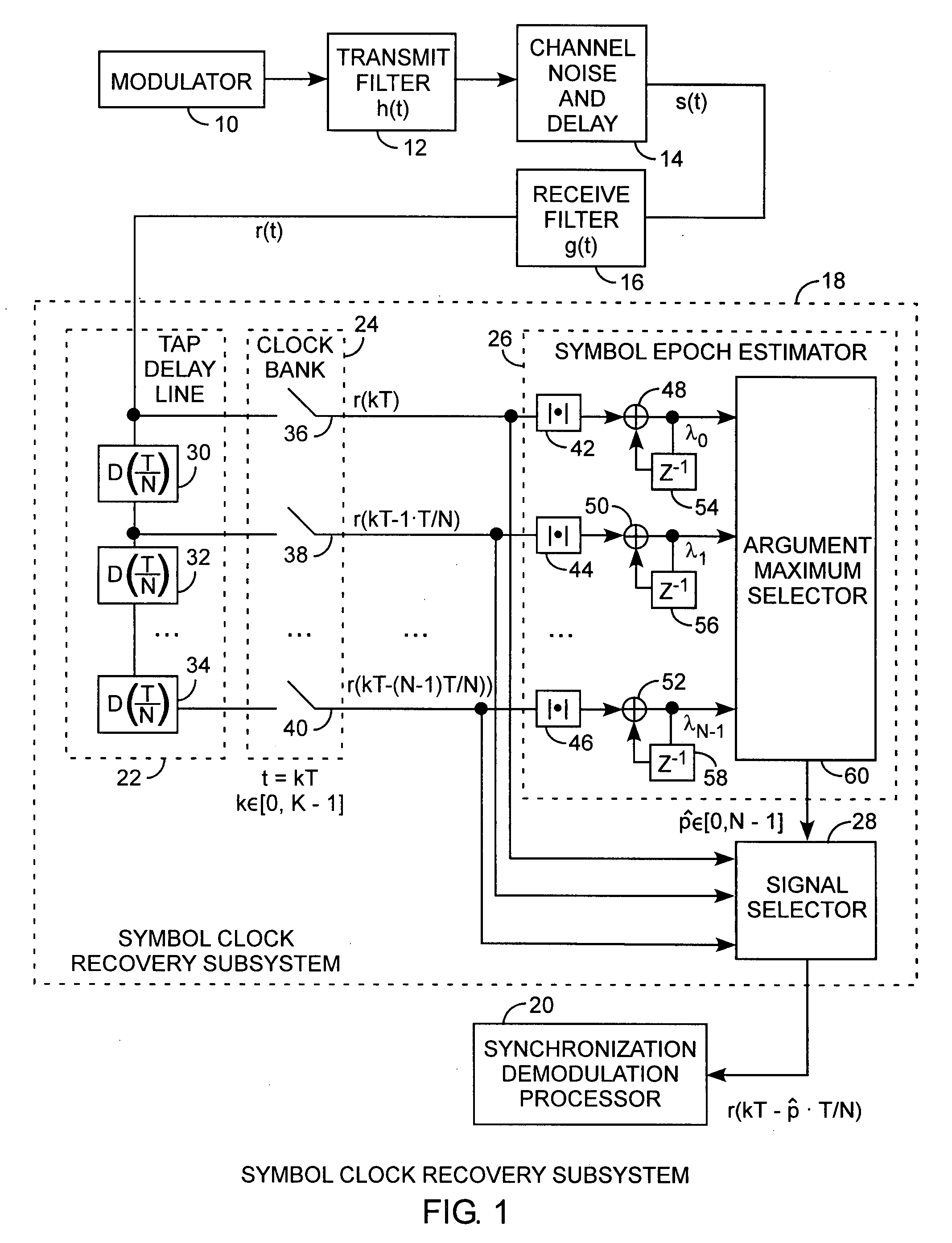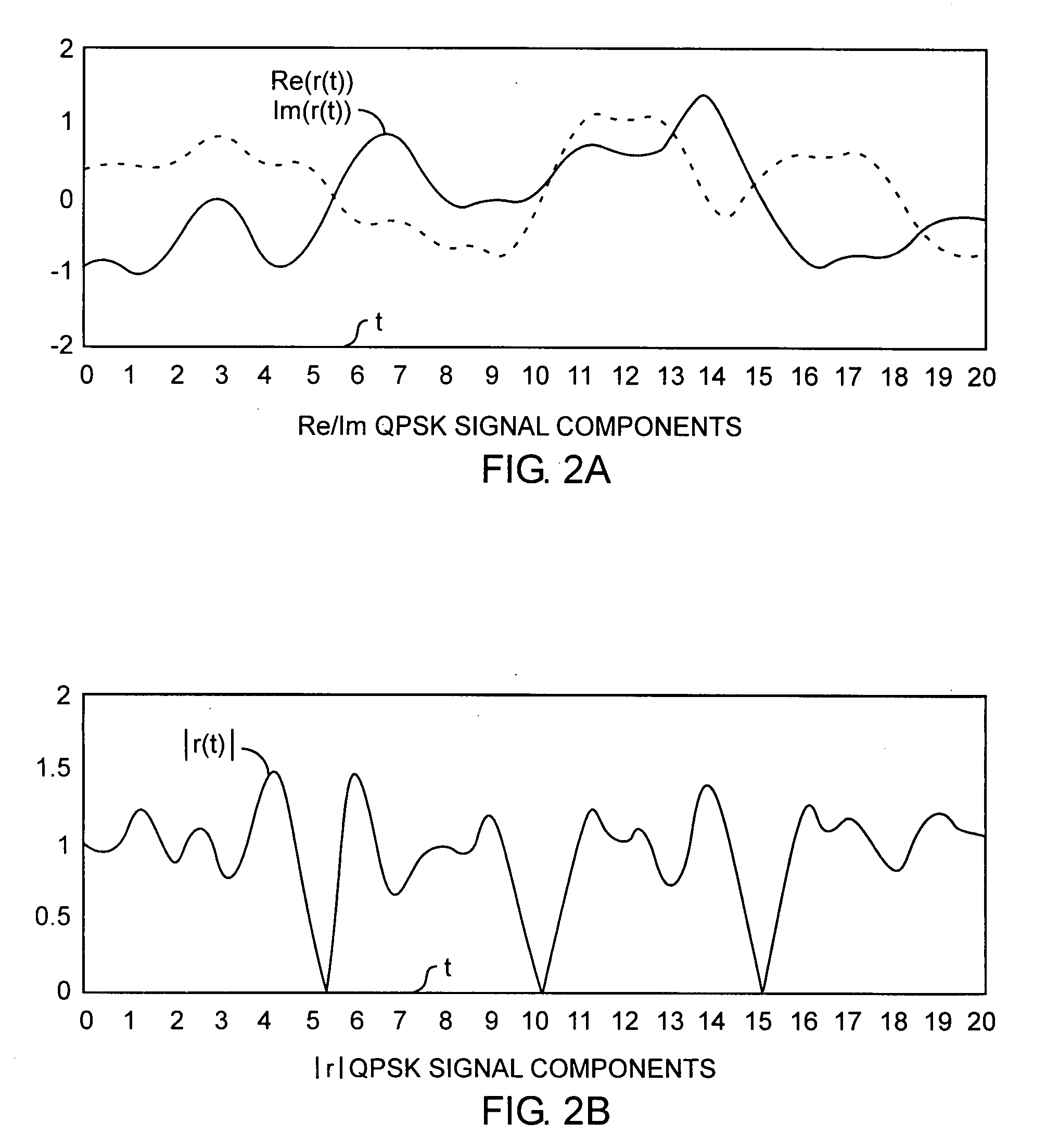Noncoherent symbol clock recovery subsystem
a subsystem and symbol clock technology, applied in the field of non-coherent communication, can solve the problems of high sampling rate, severe distortion of demodulated gmsk received baseband signal containing data information, and high probability of correct symbol epoch. , the effect of short operational signal-to-noise ratio, and simple implementation
- Summary
- Abstract
- Description
- Claims
- Application Information
AI Technical Summary
Benefits of technology
Problems solved by technology
Method used
Image
Examples
Embodiment Construction
[0022]An embodiment of the invention is described with reference to the figures using reference designations as shown in the figures. A baseband digital communication system may use a variety of modulation methods such as GMSK, QPSK, and BPSK conventional modulation methods. Referring to FIG. 1, a modulator 10 provides a modulated symbol stream fed into a transmit filter 12 filter having a h(t) filter response for providing a filtered transmit signal that is transmitted as a transmitted signal s(t) over a communication channel having channel noise and delay 14. The transmitted signal s(t) with noise and delay is received by a receive filter 16 having a g(t) response for providing a received signal r(t) that is a filtered received signal having a complex envelope. The received signal r(t) is fed into a symbol clock recovery subsystem 18 for providing one of a plurality of sampled received signals as a selected received signal that is fed to a synchronization demodulation processor 20...
PUM
 Login to View More
Login to View More Abstract
Description
Claims
Application Information
 Login to View More
Login to View More - R&D
- Intellectual Property
- Life Sciences
- Materials
- Tech Scout
- Unparalleled Data Quality
- Higher Quality Content
- 60% Fewer Hallucinations
Browse by: Latest US Patents, China's latest patents, Technical Efficacy Thesaurus, Application Domain, Technology Topic, Popular Technical Reports.
© 2025 PatSnap. All rights reserved.Legal|Privacy policy|Modern Slavery Act Transparency Statement|Sitemap|About US| Contact US: help@patsnap.com



